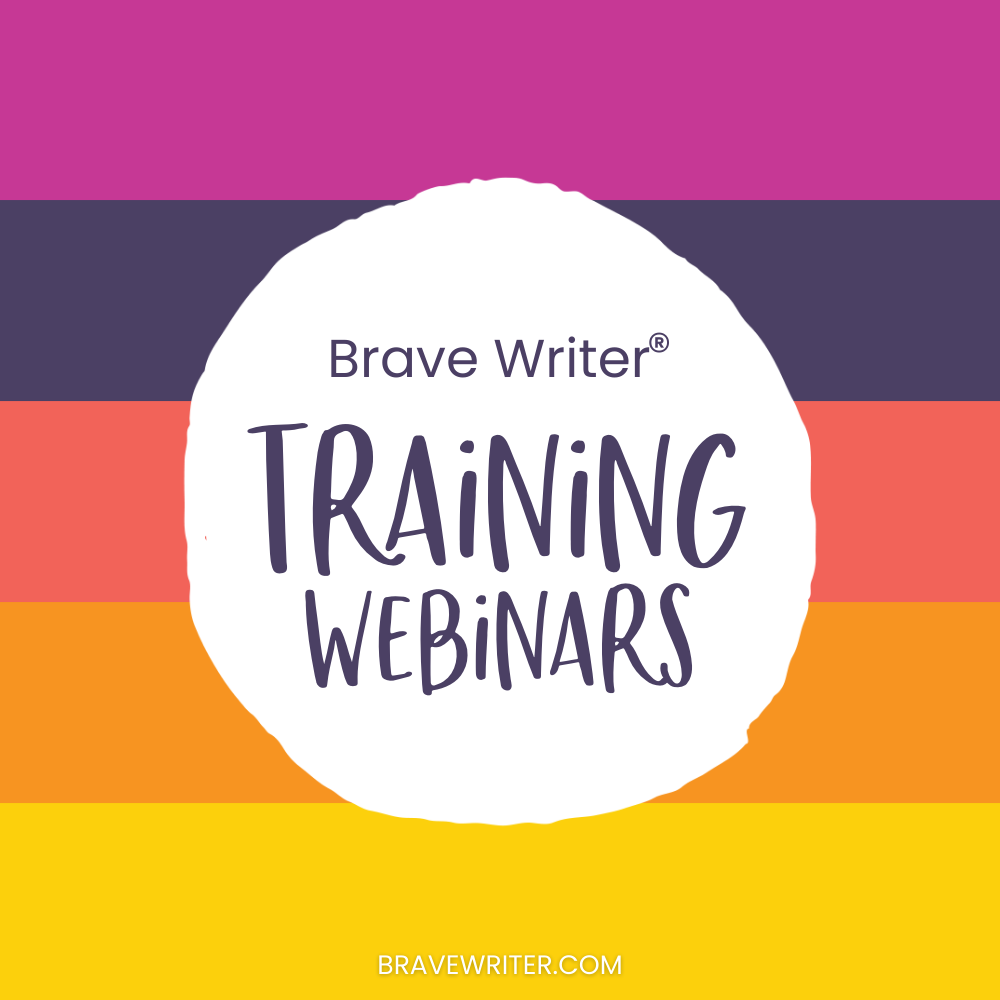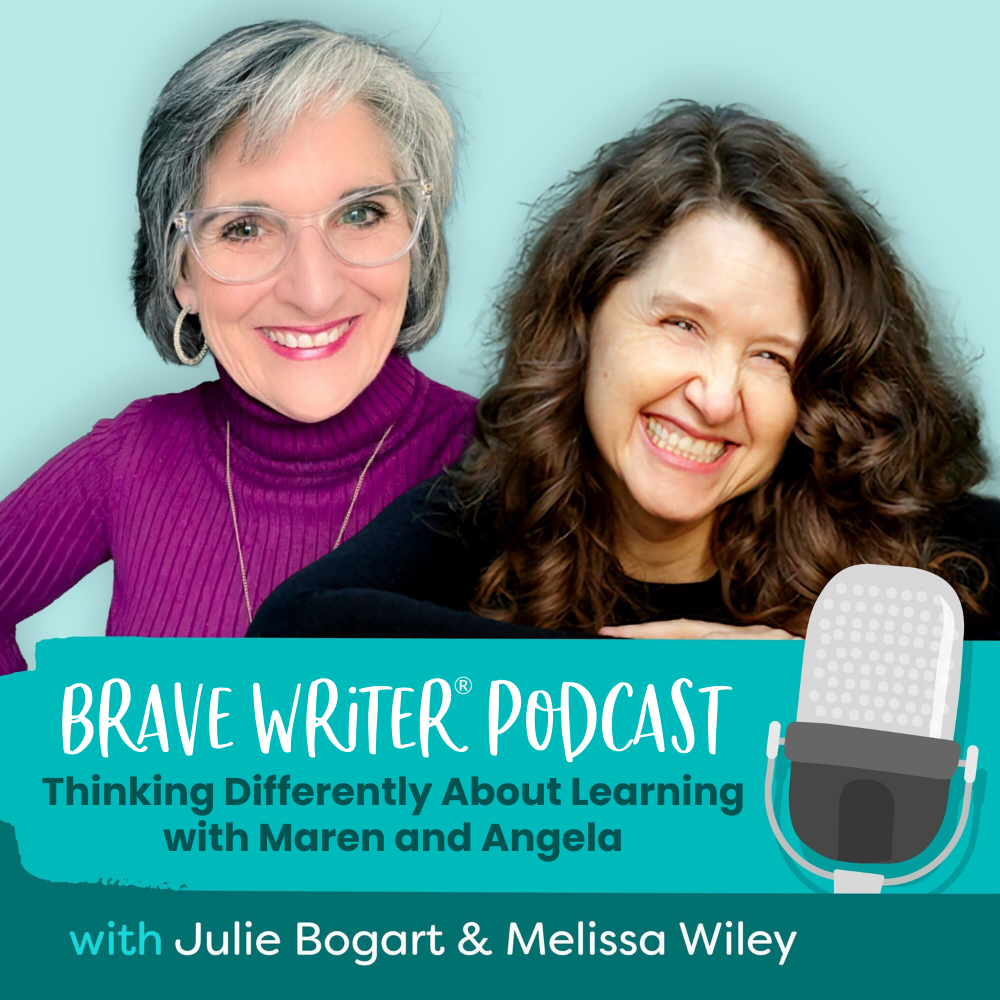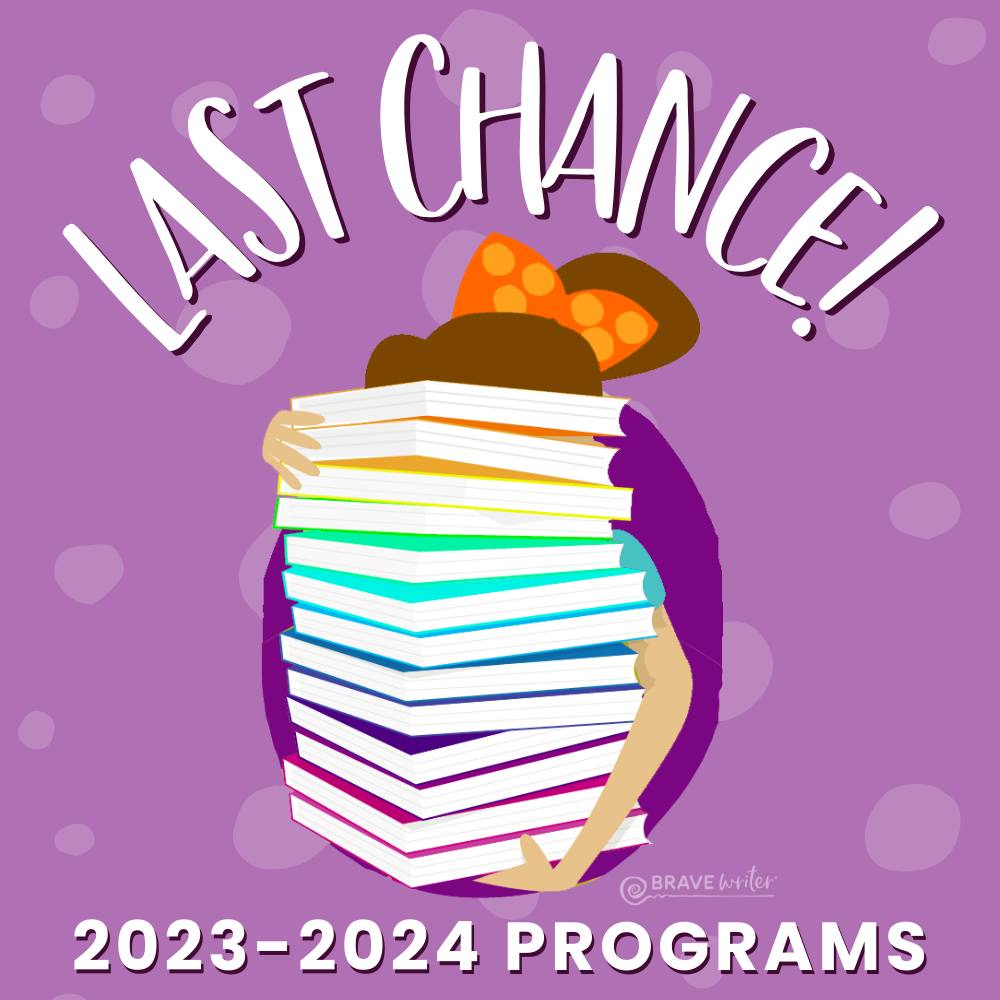
Join us for four FREE June webinars that help you understand both the philosophy and practice of Brave Writer’s literature + writing mechanics programs for ages 5-18.
Each webinar is jam-packed with information to help you be successful this coming school year, in addition to helping you understand Brave Writer materials.
REPLAYS are linked below!
Reading Aloud: Why Teach Writing Mechanics with Living Literature?
The best books, the best words—allow your children to be bathed in high quality writing while they learn the mechanics and craft of writing.
Teaching Grammar, Punctuation, and Spelling Through Literature
Our programs offer a gentle, seamless way to build strong writing skills! Julie will show you how.
Teaching Literary Analysis & Writer’s Craft Through Books
To grow a writing voice, it helps to listen to and learn from a wide variety of writing voices. Not only that, literary analysis can be the tool that unlocks buried treasure in a book and we intend to help you dig!
The Power of a Book Party
There’s nothing like a party to help kids make meaningful connections to literature. Brave Writer programs make it easy to create memorable bookish experiences for your children to deepen their learning. Join Julie to learn more about throwing a family book club party!


























